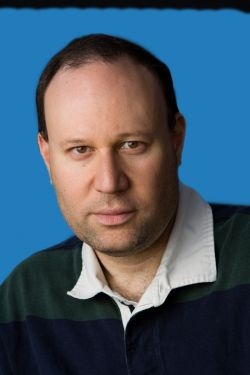Saturday Science Series Looks at Lasers and Very Cold Atoms
February 10, 2012

Ever seen one of those YouTube videos in which the beam from an improvised laser burns a hole in wood or metal? If so, you might be surprised to know that laser light can also make a target turn cold. Very cold. This is the fascinating subject to be explored in the Old Dominion University Saturday Morning Science Series at 10:30 a.m. on Feb. 18.
Charles Sukenik, Chair of the ODU Department of Physics, will present a program on "Making Cold Atoms and Molecules with Laser Light."
The program, in Room 200 of the Oceanography and Physics Building, is free and open to anyone who has an interest in science. The series is sponsored by the ODU College of Sciences. See http://sci.odu.edu/physics/events/sms.html.
In his talk, Sukenik will describe how laser light can be used to cool atoms from room temperature to almost absolute zero (minus 459 degrees Fahrenheit) in a fraction of a second. One way this happens is when a photon of laser light collides with an atom and then leaves with just a little more energy than it had initially; after many such interactions, the resulting unenergetic atom is a cold atom.
In recent years, scientists have made remarkable progress in creating collections of millions of atoms or molecules at temperatures very close to absolute zero in order to study the changing properties of these very low-energy particles. At these ultracold temperatures, the interaction between atoms or molecules and light is very different than at room temperature, and the way the atoms interact with each other is also very different. For example, a gas of very cold atoms can display some unusual properties in the same way that certain liquids or solids become superconductors with no electrical resistance when very cold.
Sukenik will give examples of the scientific studies he and colleagues at ODU are conducting on ultracold atoms to elucidate the important physical interactions that take place as such low temperatures. He has been instrumental in establishing ultracold research in atomic physics at ODU and has won four major faculty awards since joining the university in 1997.
As a member of ODU's experimental atomic, molecular and optical physics group, he has done research using the Free Electron Laser at the Thomas Jefferson National Accelerator Facility in Newport News.
In addition to his research, he has taken a leading role in undergraduate physics education, having served both as undergraduate program director and chief departmental adviser. The College of Sciences Distinguished Teaching Award that he shared in 2010 with Larry Weinstein, professor of physics and University Professor, was recognition of their work to bring SCALE-UP (Student-Centered Active Learning Environment for Undergraduate Programs) to physics classrooms at ODU.

